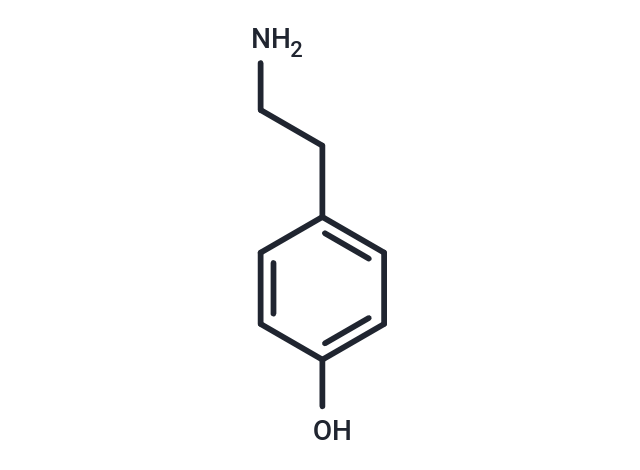Shopping Cart
- Remove All
 Your shopping cart is currently empty
Your shopping cart is currently empty


| Pack Size | Price | Availability | Quantity |
|---|---|---|---|
| 500 mg | $42 | In Stock | |
| 1 g | $50 | In Stock | |
| 1 mL x 10 mM (in DMSO) | $46 | In Stock |
| Description | Tyramine (Uteramine) is an indirect sympathomimetic that occurs naturally in cheese and other foods. Tyramine does not directly activate adrenergic receptors, but it can serve as a substrate for adrenergic uptake systems and MONOAMINE OXIDASE to prolong the actions of adrenergic transmitters. It also provokes transmitter release from adrenergic terminals and may be a neurotransmitter in some invertebrate nervous systems. |
| Targets&IC50 | TAAR1 (human):34 nM(Ki) |
| Alias | 4-hydroxyphenethylamine, para-tyramine, p-Tyramine, mydrial, Tocosine, Uteramine |
| Molecular Weight | 137.18 |
| Formula | C8H11NO |
| Cas No. | 51-67-2 |
| Storage | Powder: -20°C for 3 years | In solvent: -80°C for 1 year | Shipping with blue ice. | |||||||||||||||||||||||||||||||||||
| Solubility Information | DMSO: 55 mg/mL (400.93 mM) | |||||||||||||||||||||||||||||||||||
Solution Preparation Table | ||||||||||||||||||||||||||||||||||||
DMSO
| ||||||||||||||||||||||||||||||||||||

Copyright © 2015-2024 TargetMol Chemicals Inc. All Rights Reserved.